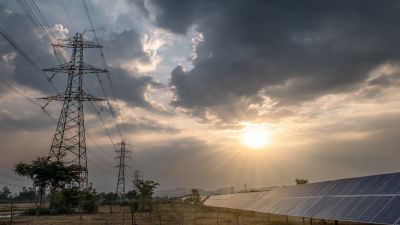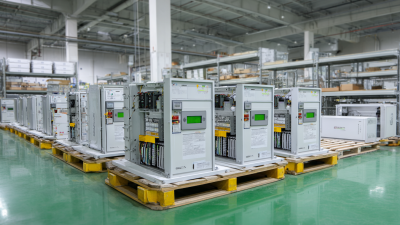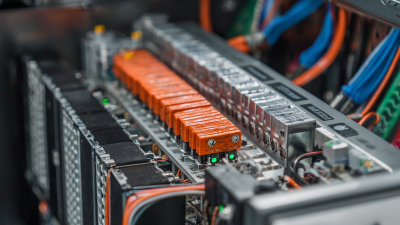SunVena Solar Blog
Residential Solar News, Insights & Resources
How to Choose the Right Solar River Inverter for Your Energy Needs
As the world increasingly shifts towards sustainable energy solutions, the demand for efficient energy systems has skyrocketed. Among these solutions, the "solar river inverter" stands out as a vital component for optimizing solar energy usage. According to a recent report from the International Energy Agency, solar energy is projected to contribute over 30% of the global electricity supply by 2030, making the choice of the right inverter crucial for maximizing energy output and system reliability. With various options available in the market, selecting a suitable solar river inverter tailored to your energy needs can be daunting. This ultimate guide aims to simplify the decision-making process by providing insights into the features, benefits, and considerations for choosing the ideal inverter that aligns with your energy goals.

Factors to Consider When Choosing a Solar River Inverter
When selecting a solar river inverter, several crucial factors come into play to ensure you meet your energy needs effectively. First, consider the inverter's power capacity, which should align with the total wattage of your appliances. Understanding your daily energy consumption will help you choose an inverter that can handle your requirements without underperforming.
Another important factor is the inverter's efficiency rating. Higher efficiency means less energy loss during operation, which translates to more power for your devices. It’s also wise to look into the inverter's features, such as integrated safety mechanisms and ease of use. Some models come with smart technology for monitoring energy usage, which can offer valuable insights and help manage your power consumption intelligently.
Lastly, portability and weight are significant if you plan to use your inverter in multiple locations. Look for lightweight options that offer rugged durability, ensuring they can withstand outdoor conditions. Combining these tips will lead you toward a solar river inverter that not only complements your lifestyle but also supports sustainable energy practices.
How to Choose the Right Solar River Inverter for Your Energy Needs - Factors to Consider When Choosing a Solar River Inverter
| Factor | Description | Importance Level (1-5) |
|---|---|---|
| Power Output | Consider the total wattage your system needs to ensure your inverter can handle peak loads. | 5 |
| Efficiency Rate | Higher efficiency means less energy loss during conversion, leading to more usable power. | 4 |
| Type of Inverter | Choose between string inverters, microinverters, or power optimizers based on your system design. | 3 |
| Warranty | A longer warranty period can indicate reliability and manufacturer confidence in their product. | 5 |
| Monitoring Features | Integrated monitoring features can help track performance and troubleshoot issues quickly. | 4 |
| Safety Features | Look for features like surge protection, grid failure protection, and thermal shutdown. | 5 |
| Size and Weight | Ensure the inverter can fit in the designated installation space without exceeding weight limits. | 3 |
Types of Solar River Inverters: A Comprehensive Comparison
When selecting the right solar river inverter for your energy needs, it's essential to understand the various types available in the market. The three primary categories are string inverters, microinverters, and power optimizers. According to a report by the International Energy Agency, string inverters account for approximately 80% of the residential solar inverter market due to their cost-effectiveness and simplicity in design. However, microinverters are becoming increasingly popular, particularly in shaded environments, as they function independently and maximize energy output on a panel-by-panel basis.
When considering your options, one important tip is to assess the efficiency ratings of the inverters. The average efficiency of modern solar inverters ranges from 95% to over 98%, significantly impacting your overall energy production and savings. Additionally, considering warranties and operational lifespan can save you money in the long run. Most manufacturers offer warranties that last between 5 to 25 years, ensuring your investment is protected.
Lastly, consider your specific energy needs. If you require a system that offers flexibility in installation and optimal performance under various conditions, power optimizers may provide the best solution. These devices work like middlemen, bolstering the output of individual solar panels, especially in installations where some panels may be shaded or oriented differently.
Solar River Inverter Types Comparison
Efficiency Ratings: How They Impact Your Energy Production
When selecting a solar river inverter, efficiency ratings are paramount because they directly influence your energy production and overall system performance. According to the National Renewable Energy Laboratory (NREL), high-efficiency inverters can convert up to 98% of harvested solar energy into usable electricity. In contrast, lower-efficiency models may only convert around 90%, resulting in significant energy loss, particularly in regions with high solar exposure.

Moreover, the efficiency rating not only affects the immediate energy output but also impacts long-term savings and return on investment. A study by Lazard found that the cost-effectiveness of solar energy systems improves drastically with high-efficiency inverters, as these devices lower the levelized cost of energy (LCOE) over their lifespan. Investing in an inverter with an efficiency rating above 95% can yield substantial annual energy savings, enhancing the value of your solar investment as electricity prices continue to rise. Therefore, when choosing a solar river inverter, consider efficiency ratings carefully to ensure optimal energy production and financial benefits.
Cost Analysis: Finding the Best Value for Your Investment
When selecting a solar river inverter, understanding the cost implications is crucial for maximizing your investment. Recent industry reports indicate that the average cost of solar inverters ranges from $1,000 to $3,000, depending on the system's capacity and brand. It's essential to consider not only the initial purchase price but also the long-term savings you could achieve through reduced energy bills and available tax credits. According to the National Renewable Energy Laboratory, investing in a high-efficiency inverter can yield savings of up to 20% over its lifespan.
Tip: Look for inverters with warranties of 10 years or more, as this can indicate durability and reliability, further ensuring that your investment pays off over time.
Additionally, consider the inverter's performance in varying climatic conditions, as this can affect efficiency and cost-effectiveness. A report from the Solar Energy Industries Association shows that selecting an inverter with a good temperature coefficient can lead to better performance during hot weather, optimizing output and savings.
Tip: Calculate your energy needs carefully and compare products to choose the best fit for your specific situation, ensuring you achieve the best value for your investment in solar energy.
Feature Comparison: What to Look for in a High-Quality Inverter
When selecting a solar river inverter, it's crucial to focus on features that align with your energy requirements. One of the primary specifications to consider is the inverter's efficiency rating. High-efficiency models convert more solar energy into usable electricity, which can significantly reduce energy waste and maximize your system’s performance. Look for inverters with at least a 95% efficiency rating to ensure optimal energy production.
Another important factor is the inverter's compatibility with your existing solar panel setup. Some inverters may only work well with specific types of solar panels, so it's essential to check product specifications and performance reports. Additionally, consider the inverter's power rating, which indicates how much energy it can handle efficiently. Choosing an inverter with a power rating slightly above your peak energy needs can provide a buffer for fluctuations in energy demand. Lastly, features like monitoring capabilities, warranty length, and built-in safety measures can further enhance the inverter's value and reliability in the long run.

Related Posts
-

Innovative Examples of RV Solar Inverter Technologies Shaping Sustainable Travel
-

Mastering Your Solar System with the Best Must Solar Inverter Selection Guide
-

Navigating Import and Export Certifications for Best on Grid Solar Inverters in the Global Market
-

Mastering Hybrid Solar Inverters: A Comprehensive Guide to Boosting Energy Efficiency by 30%
-

Unlocking Energy Independence with Solar Power Inverter for Home Benefits